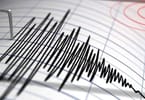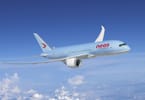UAL Corp.’s United Airlines, Delta Air Lines Inc. and Southwest Airlines Co. all posted quarterly losses in part because of charges tied to jet-fuel contracts they bought in advance. Investors say that’s good news.
The Bloomberg U.S. Airlines Index is up 2.5 percent since carriers began reporting earnings Oct. 15, while the Standard & Poor’s 500 Index has fallen 6.5 percent. After tumbling fuel prices caused deficits because of airlines’ hedges, Wall Street is betting that lower energy costs herald profits next year.
“Long-term value investors who have basically avoided airlines for decades are looking at taking stakes,” said Michael Derchin, an analyst at FTN Midwest Research Securities in New York. “The common wisdom going into a recession is that the last group to do well would be airlines. But I’m modeling profits for all of them” in 2009.
The 10 biggest U.S. carriers lost a combined $2.52 billion in the third quarter, partly because of writedowns in the value of hedges. Jet fuel surged to a record $4.36 a gallon in July, then plunged by more than half to $2.07 today.
“It’s remarkable how much has changed in such a short period,” Doug Parker, chief executive officer of US Airways Group Inc., said on a conference call on Oct. 23, when the airline posted an $865 million net loss that included writedowns for fuel hedges.
US Airways jumped 19 percent in New York trading this quarter through today, the third-biggest advance among 14 airlines in the Bloomberg index behind UAL’s 30 percent and AirTran Holdings Inc.’s 34 percent. The S&P 500 plummeted 27 percent in the same period.
`Nobody Knows’
The largest U.S. carriers announced 26,000 job cuts and the grounding of 460 jets as fuel was rising, trimming costs to help them weather any travel slowdown from the credit crunch. The drop in fuel prices further strengthens their ability to halt losses.
“Most airlines can make a profit at jet-fuel prices at these levels,” said John Armbrust, an aviation fuel consultant in Palm Beach Gardens, Florida. “The question is, do prices stay where they are? Nobody knows.”
Without last quarter’s fuel-hedge charges, Southwest, Northwest Airlines Corp. and Alaska Air Group Inc. all said they would have made money. Marking down the value of fuel hedges snapped Southwest’s 17-year quarterly profit streak.
The 10 carriers had an operating loss of about $870 million, narrower than analyst Derchin’s estimated $1 billion. He projects about $5 billion in profits for the group next year.
They’ll probably be “break-even, maybe better” this quarter, he said. Through nine months, the collective operating loss was $2.86 billion, based on airlines’ reports.
`Free Fall’
Carriers including Southwest, US Airways and AirTran Holdings Inc. said they may defer additional fuel-hedging contracts until oil prices stabilize.
“In the last three weeks alone, oil’s down $40” per barrel, AirTran CEO Bob Fornaro said in an Oct. 23 interview. “The market really is in a free fall.”
Fidelity Management & Research is among the investors adding to airline holdings last quarter, boosting its stake in Continental Airlines Inc. to 15 million shares, or almost 14 percent. The world’s largest mutual-fund company previously held 4.8 percent.
The risks for airline stocks include the possibility that the weakening global economy will decimate demand, as well as the prospect of another jump in fuel prices, said Kevin Crissey, an analyst at UBS Securities in New York.
2009 Profit
Still, Crissey also projects profits for the U.S. industry next year. He cited the carriers’ cuts in domestic capacity of 10 percent to 15 percent and said oil is unlikely to return to its $147-a-barrel peak.
Offering fewer flights gives airlines more pricing power. Passenger unit revenue, a measure of fares and fees, jumped by 8 percent or more for most carriers last quarter, and Delta is among the airlines saying they expect similar gains in the current period.
“The perception is that the airlines are in more trouble than they actually are,” Crissey said in an interview. “Investors love the capacity argument. If it was just a fuel price drop, that’d be more shaky. But together, it’s a much more compelling argument.”
AMR declined 20 cents, or 2.3 percent, to $8.60 at 4:15 p.m. in New York Stock Exchange composite trading while Delta fell 65 cents, or 7.8 percent, to $7.66. UAL dropped 55 cents, or 4.6 percent, to $11.40 in Nasdaq Stock Market composite trading. The Standard & Poor’s 500 Stock Index fell 3.2 percent.
WHAT TO TAKE AWAY FROM THIS ARTICLE:
- The risks for airline stocks include the possibility that the weakening global economy will decimate demand, as well as the prospect of another jump in fuel prices, said Kevin Crissey, an analyst at UBS Securities in New York.
- Passenger unit revenue, a measure of fares and fees, jumped by 8 percent or more for most carriers last quarter, and Delta is among the airlines saying they expect similar gains in the current period.
- US Airways jumped 19 percent in New York trading this quarter through today, the third-biggest advance among 14 airlines in the Bloomberg index behind UAL’s 30 percent and AirTran Holdings Inc.






















